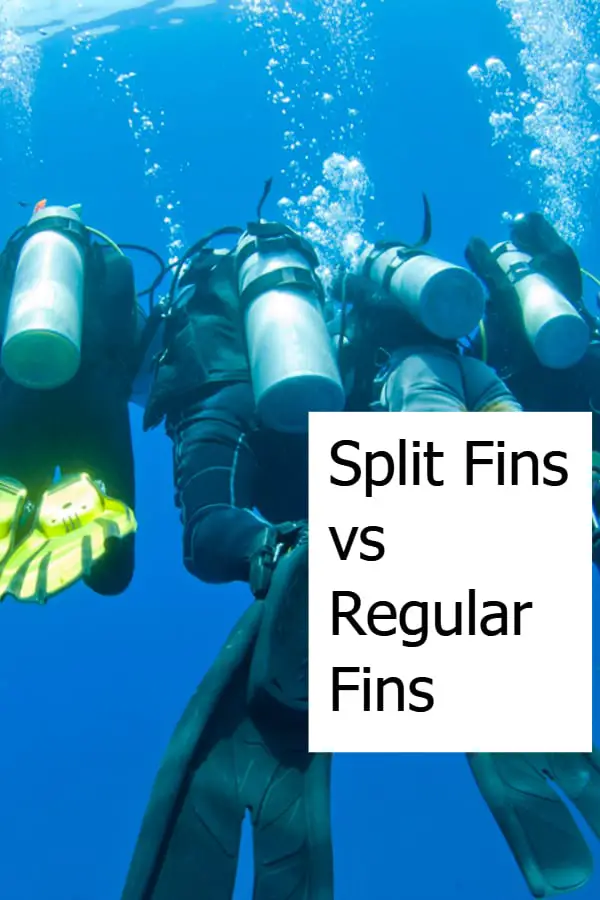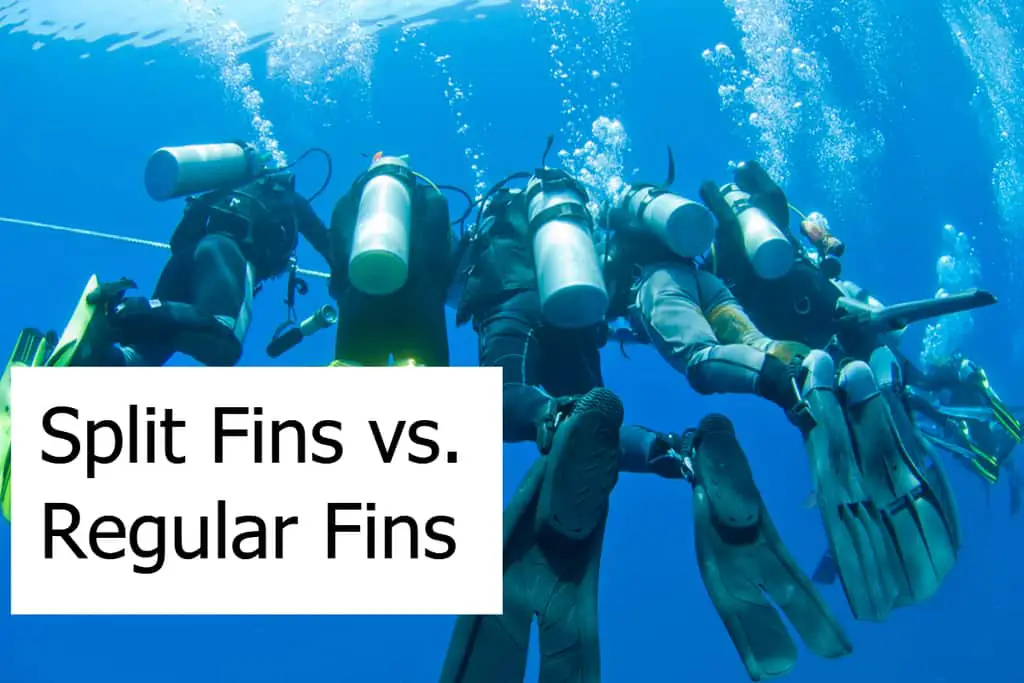Split Fins vs Regular Fins and Blade Flippers for Scuba Diving
There’s an ongoing debate between divers whether split fins or regular/blade/paddle fins are better. Regular fins are also usually referred to as paddle fins, blade fins, or full fins. Historically, regular fins are what were the only fins available for diving and snorkeling.
Even today many divers prefer paddle fins over splits. There’s no perfect answer and recommendation for a diver which kind to use underwater. Let’s have a closer look at split fins vs paddle fins so you can decide which types of fins is best for you as a scuba diver.
Split Fins vs Blade Fins: Which should You use?
No matter whether you get paddle fins or split fins, you can either get them with an open heel or a full foot. The Cressi Frog Plus Fins below are open-heel paddle fins similar to the Atomic Aquatics Open Heel Split Fins.
Comparing regular and split fins
There are significant differences between the two types of scuba fins. Unfortunately, the ones that you’d first look at, like price, weight, stiffness, etc. are similar for both the split fin and the paddle fin. Looking at split fins vs blade fins in more detail will give you a better overview of the differences between both types.
Example of Paddle Fins
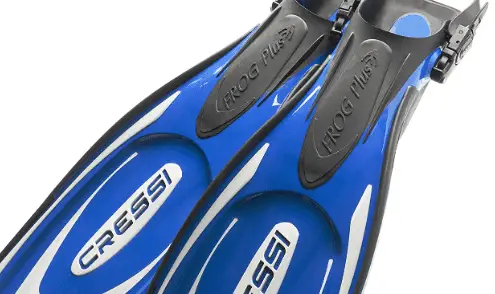
Example of Fins with a Split
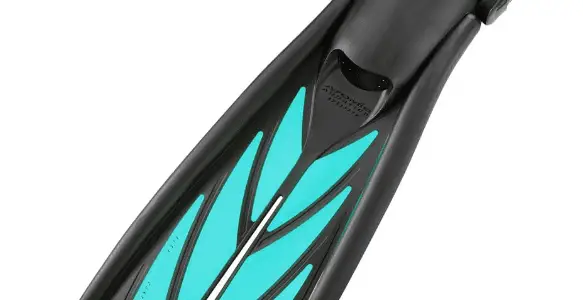
The usual argument you will hear about split fins is that they great in calm waters where they offer good propulsion. In stronger currents, they are not working that well for many divers.
Paddle fins overall can offer better propulsion and allows better control. Some also say that they have a better feel when using regular fins.
What is the Difference between Blade and Split Fins?
When you’re diving anywhere you will see that divers use either split fins or blade fins. The visual difference between the two is very obvious. The regular fin consists of one solid blade while the split fin, as the name suggests, is split down the middle.
When did blade fins come around?
Blade fins have been around since the 1940s. Split fins are a relatively new invention. The differences for the diver are experienced when it comes to propulsion efficiency and power and conservation of air during a dive.
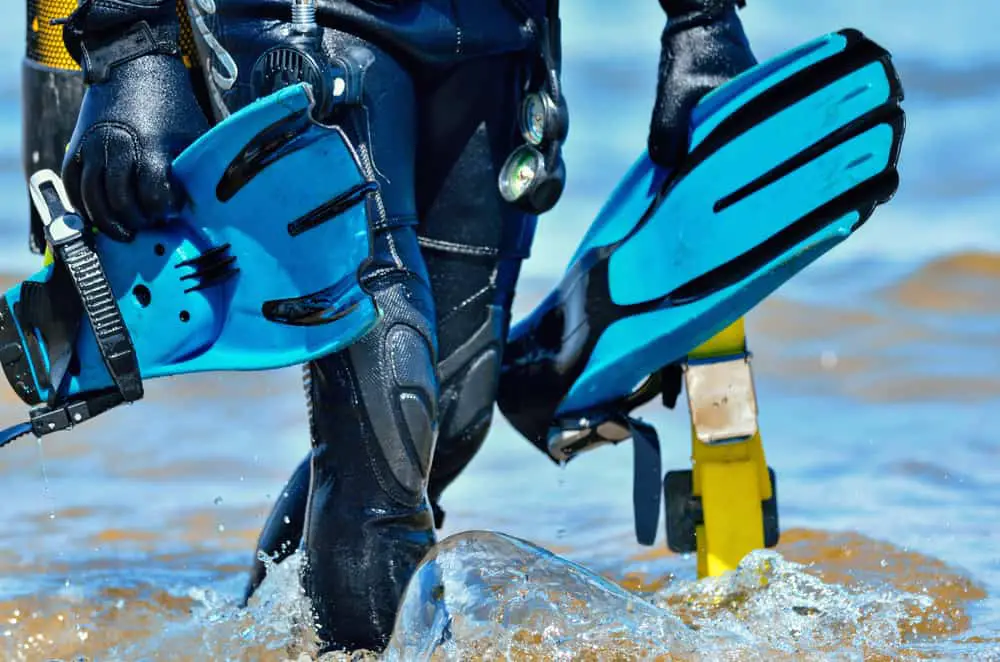
The propulsion power of a paddle fin is directly dependent on the strength of the kick. It’s pretty straightforward to understand how a blade fin works when you look at it.
The harder the diver kicks using a paddle fin, the more propulsion power is generated. This also allows an experienced diver to adjust the strokes to achieve a high level of control.
Splits – Why did they come about?
Split fins are more sophisticated. The split is designed to create a vortex which assists with the propulsion. Ultimately, it also should result in more speed.
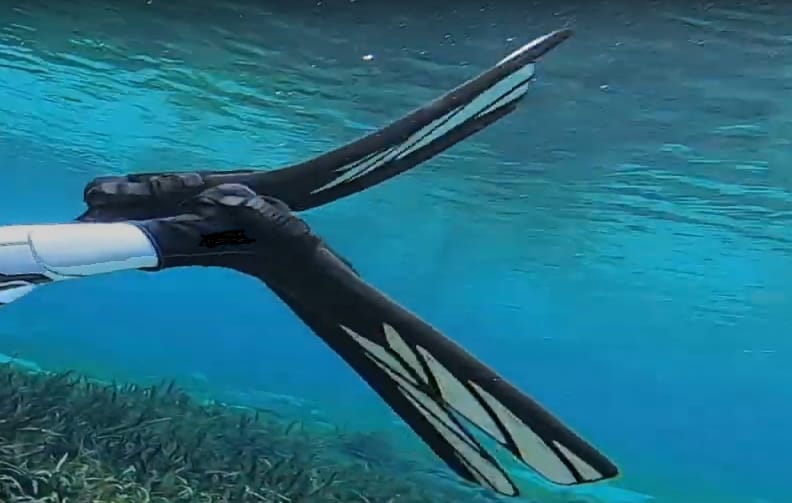
The second advantage with regards to the split fin is that on the upward stroke the water can pass through the split. The upward stroke does provide the least propulsion power so the upward stroke with a blade fin mostly requires energy that is not resulting in a lot of movement. The split fin allows preserving energy which can result in less air consumption!
Let’s have a closer look at the two types so you can make a decision about which kind to get for yourself.
Regular/Paddle Fins
Since the blade fins were invented, not much has changed in their overall design. The materials have changed and been replaced with stiffer and lighter materials. Originally, thick black rubber was used to make a paddle fin while today lightweight plastics are what make a regular fin.
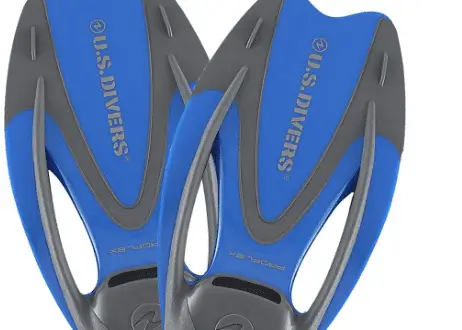
Pros and Cons
Pros
- Experienced divers get more propulsion power and with that higher acceleration rates out of them
- Better precision movements as you’re able to control all aspects of the stroke; like pitch, direction, and angle
- Maneuverability is higher as a paddle fin allows for movements in any direction
- The large cross-section of the edge allows for easy pivots
Cons
- The large size of the blade can cause cramps in the calves due to the strength needed for the strokes
- Recreational divers might need to specifically train their calf muscles to produce a good level of propulsion power with a paddle fin
Split Fins
Split fins have a split down the center of the blade. You somewhat end up having two blades instead of one. Or to see it as one blade where the fins split in the center.
They are designed to act like two separate fins that twist independently with each stroke. This creates a vortex and results in more propulsion power with less energy.
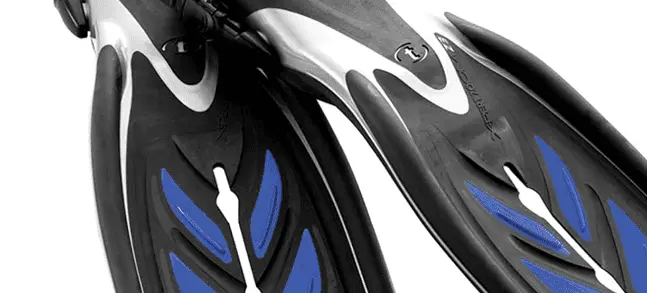
If you are a diver that prefers the flutter kick then split fins might be your better choice. Your speed will increase as each blade twists like a propeller which produces more propulsion, specifically with the flutter kick.
Pros and Cons
Pros
- On upward strokes, the water can flow through the split reducing the energy needed and conserving air
- The reduced power required to achieve propulsion reduces the stress on the calves, ankles, and knees – you won’t cramp up as fast
- The two blades twist during each kick/stroke and basically act like a little propeller which results in more speed with less energy consumed
Cons
- The lack of stiffness can make it harder to maneuver quickly underwater
- Divers often don’t get good feedback from splits – they are hard to control and put in the proper strength
- They are harder to use when you’re trying to make quick turns or spins as they are best for straight propulsion
Are Split or Paddle Fins the better choice?
There’s simply no straightforward answer. Fins with a split are easier to handle for the casual or inexperienced diver compared to blade fins.
They require less energy and also need less technique. Many divers that regularly dive and have more experience prefer the regular fins as they provide more power and are better for maneuvering.
Split fins, as mentioned above, are better to use for a flutter kick. A frog kick requires more stiffness. Therefore, usually paddle fins will work better with a frog kick. So, in short, when comparing split fins vs paddle fins then the type of kick you prefer might give you an idea of which flippers will work better for you.
Travel fins anyone?
Make sure you pick a specifically designed pair of travel fins when you dive travel. They are designed to fit easily into your suitcase.
Travel fins are typically designed to be paddle fins. The blades on these fins are shorter but wider. This way they have a similar amount of propulsion while being shorter. Split fins don’t work that well for such a design as the blades of the splits get too wide. Have a look at the US Divers Trek Travel Paddle Fin below!
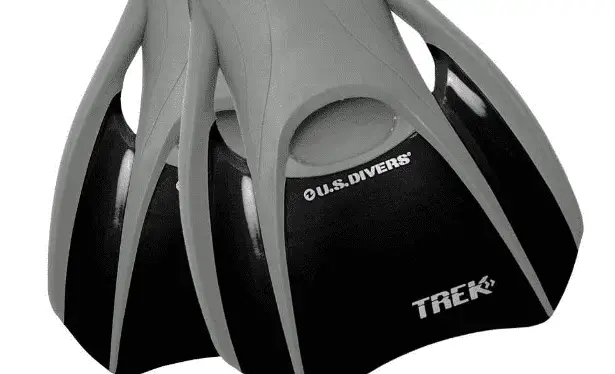
Split fins are better for beginners?
Overall split fins will be better if you’re just starting to dive or if you don’t go very often. You will enjoy the benefits of requiring less strength and the reduced strain on your calves, knees, and ankles. It also will help you with oxygen conservation during your dives.
You want to match your fins to the type of dive you’re intending to have. If you’re going to dive in an environment with only little currents then split fins are a great choice. Otherwise, you might have a second look at paddle fins for your diving needs!
Paddles for Strong Currents?
In environments with stronger currents or for technical dives, you want to consider using blade fins for diving. A paddle fin provides a more powerful kick and propulsion in the water and you need the additional maneuverability and precision in environments with strong currents as well as when performing a technical dive.
Final Verdict
When looking at split vs paddle fins shows that both kinds will get the average diver to where you want to be when diving. It ultimately will depend on your comfort level with your paddle or split fins and on what kind of dives you plan to take.
Check out reviews on paddle fins and split fins as well as feedback from other divers that match your diving style and underwater environments. You can certainly also rent a few types of fins from a dive shop to find out whether you prefer split or paddle fins for your diving.
